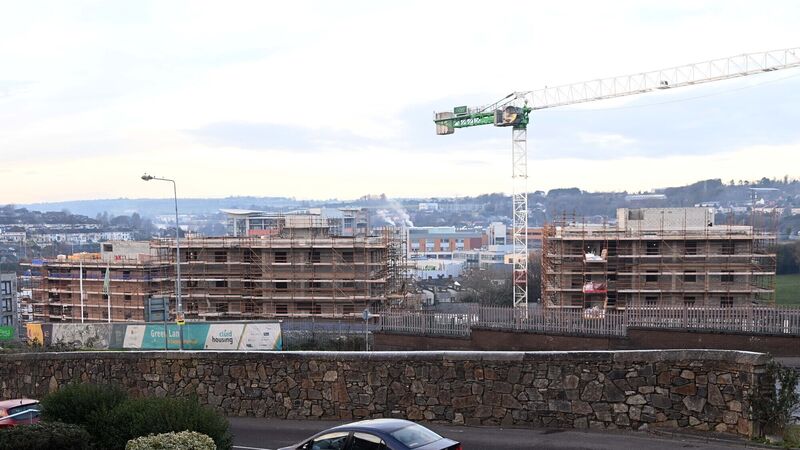Review finds reluctance among lenders to provide funds for apartment developments

Feedback from developers and other stakeholders with Home Building Finance Ireland shows, in the case of apartments, issues with viability are far more acute. File picture: Denis Minihane
Lenders may not have the risk appetite to fund build-to-sell apartments because the demand for people to buy such homes is “unproven”, a new report has suggested.
A review of the operation of Home Building Finance Ireland (HBFI) prepared by the Department of Finance has found that “funding gaps remain” in terms of meeting the expected housing demand at this time, as lenders “may not yet have the capacity or risk appetite to provide the overall levels of funding required”.
Created by the Government in December 2018, the HBFI was set up to provide funding at market rates for viable residential developments in the State. A progress report published this week highlights the impact that HBFI has had but also draws attention to issues in the market that are stymying new housing developments.
By the end of 2022, the HBFI had approved 99 facilities and had made funding available worth €1.24bn, with the average development size at 58 units. As part of the review, a public consultation was undertaken to gauge the experience of developers and other stakeholders with the HBFI.
“In general, stakeholder feedback indicates that there is reasonable access to capital for viable residential development,” it said. “However, viability was raised by all stakeholders as the key factor in accessing funding, with reduced viability indirectly and adversely impacting the availability of funding for development.”
The feedback indicated a clear difference between access to finance for houses and for apartments. In the case of apartments, issues with viability are far more acute. The pillar banks have a “greater appetite” to provide finance for housing development which can be developed in phases and has “proven market demand”.
Regarding apartments, however, the report said that lenders had a “limited appetite to take on apartment sales risk, given unproven demand for build-to-sell apartments in particular”.
Developers also said that costs were easier to control in housing development, while the entirety of an apartment structure must be completed before any units can be sold and this can take two to three years.
“Over recent years, high-density apartment development has generally only been viable for the build-to-rent (BTR) market,” the report said. “However, in the past 12 months, yield movements alongside construction cost inflation has now resulted in a number of BTR apartment developments also becoming unviable.”
Stakeholders said that proposed changes to the planning system must provide more certainty in order to be effective in unlocking supply and supporting a sustainable pipeline of housing delivery.
Some expressed the view that HBFI sometimes offered funding to projects which could have availed of funding from other sources, and should not be “directly competing, or displacing” finance available on the market.
Nevertheless, the Department of Finance report said that it was satisfied funding gaps remain in the market and that the HBFI is having a “positive impact” in terms of availability of funds in the market. The next review of the HBFI is due to take place in 2025.









